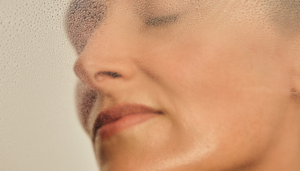Heart rate variability (HRV) is a key indicator of heart health and overall well-being. This measure reflects the time variance between heartbeats, providing insights into your body’s adaptability and resilience.
Understanding HRV can help you manage stress, optimise performance, and enhance longevity. Explore the importance of HRV and its impact on your health!

In this article
FREE anti-ageing guide

- Master the science of rejuvenation.
- Apply proven tips to turn back the clock.
- Transform your health with top longevity specialists.
Introduction to HRV
Unlike a metronome, a healthy heart’s rhythm changes with every beat. This change in time between beats is called Heart Rate Variability (HRV). Some situations make these changes bigger (high HRV), while others make the heart beat more steadily (low HRV).
HRV represents the variance in time between your heartbeats, even at rest. These spontaneous changes and rapid adjustments in heart rate are crucial for meeting your body’s changing needs. An optimal level of HRV signifies good health and the ability to adapt to various stressors effectively.
The science behind HRV
HRV is deeply connected to the autonomic nervous system (ANS), a critical regulator of involuntary bodily functions, such as heart rate, digestion, respiratory rate, and pupillary response [1].
The ANS comprises two main branches: the parasympathetic nervous system (PNS) and the sympathetic nervous system (SNS). These branches work in opposition to maintain homeostasis and ensure your body can respond effectively to various stimuli.
The parasympathetic system (PNS), often referred to as the “rest-and-digest” system, promotes relaxation and recovery. It slows heart rate, increases intestinal and gland activity, and relaxes sphincter muscles in the gastrointestinal tract.
The sympathetic system (SNS), known as the “fight-or-flight” system, prepares the body for stressful or emergency situations. It increases heart rate, redirects blood flow to muscles, and releases adrenaline.
HRV reflects the balance between these two systems.
When the PNS is dominant, HRV tends to be higher, indicating a state of relaxation and recovery. Conversely, when the SNS is dominant, HRV is lower, reflecting a state of stress or heightened arousal.
Heart Rate Variability (HRV), explained
How your heart beats
Your heart has its own rhythm, thanks to a built-in pacemaker called the sinoatrial (SA) node, which keeps it beating at around 100 beats per minute.
However, your ANS significantly affects how your heart beats. The cells within your heart’s pacemaker receive direct input from both sides of your ANS, influencing each beat on a cellular level:
- The rest-and-digest system slows your heart, increasing variability between beats (higher HRV).
- The fight-or-flight system speeds up your heart, reducing variability (lower HRV).
These systems can be silent, active, or competing with each other at any time, leading to considerable variation in heartbeats.
Understanding HRV
As a general rule of thumb:
- Higher HRV is associated with rest-and-digest, overall fitness, and good recovery.
- Lower HRV is linked to fight-or-flight responses, stress, illness, or overtraining.
HRV provides a window into your body’s ability to adapt and respond to different situations, making it a valuable indicator of your overall well-being, including psychological stress [2].
How to calculate HRV?
Calculating HRV involves several methods, with the root mean square of successive differences (RMSSD) being one of the most common. RMSSD measures the short-term variations between consecutive heartbeats, providing a reliable indicator of parasympathetic activity.

- Electrocardiography (ECG) or a chest strap can be used to accurately measure HRV. In fact, ECG records the electrical activity of the heart and is considered the gold standard for HRV measurement. ECG provides detailed data on the R-waves, the peaks of the electrical impulses that signal each heartbeat, allowing for precise calculation of HRV.

- Photoplethysmography (PPG) is a more accessible method that uses light to measure changes in blood volume in the microvascular bed of tissue. PPG sensors, often found in wearable devices like smartwatches and fitness trackers, provide a convenient way to monitor HRV in everyday settings. However, the accuracy can be compromised by factors such as a loose fit and other external influences.
HRV is unique to you
Here’s the most important take– HRV is a highly individualised metric, meaning what is considered “high” or “low” HRV varies from person to person.
Some people have consistently steady HRV scores, whilst others experience significant fluctuations. This uniqueness makes HRV a valuable and evolving tool for monitoring your health.
You should compare your HRV to your own averages rather than to others. Daily and seasonal fluctuations in HRV are normal, reflecting changes in your body’s status and response to various factors.
Remember, many factors influence your autonomic nervous system (ANS) and, consequently, your HRV. Embrace your HRV’s unique patterns and focus on observing and improving your personal scores.
Age backwards by 24 years like Dave Pascoe

- Learn the science that helped Dave enter his 60s with a biological age of less than 40.
- Apply proven longevity strategies to transform your own health.
- Implement expert tips for lasting youthfulness.
What’s a good HRV?
There’s no such thing as a good HRV. As mentioned earlier, your HRV is unique to you, and you should not be comparing your HRV data to others.
A normal HRV for adults ranges from below 20 to over 200 milliseconds*. To determine your baseline, use a wearable to measure HRV during sleep over a few weeks.
Oura’s community data shows varied HRV scores across ages and genders. Check their blog for more details.
HRV is complex; a high number isn’t always good, and a low one isn’t always bad.
For instance, low HRV during exercise indicates appropriate fight-or-flight activation, with recovery following as HRV rebounds.
Daily stressors cause HRV fluctuations, so measuring during the day captures immediate responses. For chronic state insights, measure HRV at night when the body is in a consistent state without external variables. Wearables measuring daytime HRV might not reflect true ANS balance.
Factors influencing HRV
HRV is influenced by a myriad of factors, which can be broadly categorised into internal, external, and environmental.
Understanding which factors are within your control is crucial for improving your HRV and making informed decisions to enhance your overall health.
1. Internal factors
Age: HRV typically decreases with age. Younger individuals tend to have higher HRV due to more robust autonomic function, whereas older adults experience a natural decline as the parasympathetic activity reduces and sympathetic dominance increases. Scientists are still figuring out the change in the autonomic nervous system as we age.
Gender: Research indicates that men often have higher HRV compared to women. However, these differences can vary based on hormonal cycles and lifestyle factors.
Ethnicity: HRV can vary across different ethnic groups due to genetic and cultural differences. These variations may influence the autonomic regulation and cardiovascular responses among diverse populations.
Personality: Certain personality traits, such as resilience and optimism, are associated with higher HRV. Conversely, individuals with traits like anxiety and neuroticism may exhibit lower HRV. These differences highlight the intricate link between psychological factors and autonomic function.
2. External factors
Stress: Chronic stress significantly reduces HRV by increasing sympathetic activity and decreasing parasympathetic activity. Acute stressors, including running for a marathon can also cause temporary dips in HRV.
Mood: Positive emotions such as happiness and relaxation are linked to higher HRV, indicating a balanced autonomic state. Negative emotions, including anger and depression, tend to lower HRV, reflecting increased physiological stress.
Illness: Conditions such as cardiovascular diseases, diabetes, and infections can negatively impact HRV. The body’s response to illness often involves heightened sympathetic activity, leading to reduced HRV.
Lifestyle: Habits such as regular physical activity, adequate sleep, and a balanced diet contribute to higher HRV. Conversely, poor lifestyle choices like smoking, excessive alcohol consumption, and irregular sleep patterns can diminish HRV.
3. Environmental Factors
Electromagnetic Fields (EMF): Exposure to EMFs from devices like mobile phones and Wi-Fi routers can influence HRV. Some studies suggest that prolonged exposure to EMFs may lower HRV by disrupting the autonomic balance.
Constant input from devices: The modern lifestyle often involves continuous interaction with digital devices, leading to mental fatigue and stress. This constant input can reduce HRV by maintaining a state of heightened alertness and sympathetic dominance.
The best anti-ageing supplements

- Addresses signs of ageing comprehensively.
- Improves sleep quality.
- Boosts cellular renewal and energy.
- Enhances collagen production.
- Recommended by biohackers and health experts.
HRV for performance and recovery
HRV is an invaluable tool for optimising your athletic performance and ensuring effective recovery. By closely monitoring your HRV, you can tailor your training programme, enhance your recovery, and prevent injuries.
1. HRV in training load management and personalised training
Using HRV data helps you manage your training load more effectively. When your HRV is high, your body is well-recovered and ready for intense training. A low HRV indicates that your body is under stress and might benefit from lighter activity or rest. By incorporating HRV readings into your routine, you can personalise your training.
2. HRV for recovery assessment and injury prevention
Monitoring HRV can also help with assessing your recovery. After intense exercise, a drop in HRV signals the need for rest. By keeping an eye on these changes, you can determine when you’ve fully recovered and are ready for your next training session. Consistently low HRV readings can also serve as early warnings of overtraining or potential injury. If you notice a persistent decrease in your HRV, it might be time to incorporate more rest days or reduce the intensity of your workouts to prevent injuries.
3. Optimising recovery strategies based on HRV data
HRV data allows you to optimise your recovery strategies. Engaging in activities that promote relaxation and parasympathetic activity, such as yoga, meditation, and ensuring adequate sleep, can help improve your HRV. Nutritional strategies, including proper hydration and balanced meals, also play a vital role in recovery. By aligning your recovery practices with your HRV readings, you can ensure that you’re giving your body the best chance to recover fully and perform at its peak.
Proven ways to improve your HRV
Here are some proven ways to boost your HRV:
1. Reduce and manage stress
Meditation: Regular meditation can help reduce stress and promote relaxation, which can increase your HRV. Even just a few minutes of mindfulness each day can make a difference.
Breathwork: Practising controlled breathing exercises, such as deep breathing or the 4-7-8 technique, can stimulate the parasympathetic nervous system, leading to higher HRV.
Social connections: Spending time with loved ones and maintaining strong social connections can improve your emotional well-being and, in turn, boost your HRV. Positive social interactions help reduce stress and promote a sense of belonging.
Additional techniques to reduce stress:
- Walks in nature
- Acupuncture
- Talking to your mum or a loved one
- Taking breaks and going on vacations
- Reading books and practising self-care
- Reducing caffeine intake (consider green tea)
2. Exercise more often
Regular activity: Engaging in regular physical activity is key to improving HRV. Aim for a mix of aerobic exercises, such as running or swimming, and strength training.
Zone 2 cardio: Focus on zone 2 cardio, which involves maintaining a moderate intensity that you can sustain for longer periods.
Balance between training and recovery: It’s important to balance your workouts with adequate recovery. Incorporate rest days and active recovery sessions into your routine to allow your body to recuperate and maintain a healthy HRV.
3. Ensure you have good quality sleep
Consistent schedule: Prioritise getting 7-9 hours of quality sleep each night. Establish a regular sleep schedule by going to bed before midnight and waking up at the same time every day.
Pre-bedtime routine: Avoid eating for 2-3 hours before bed and create a restful sleep environment. Good sleep hygiene is crucial for maintaining a high HRV.
Natural light: Get natural light exposure during the day to help regulate your sleep-wake cycle.
4. Focus on your nutrition and hydration
Healthy diet: Eating a balanced diet rich in fruits, vegetables, lean proteins, and healthy fats can support your overall health and improve HRV. Avoid excessive alcohol and caffeine, especially before bedtime, as they can negatively impact your HRV.
Supplement intake: Ensure you consume enough Magnesium, Omega-3, and Vitamin D which are beneficial for your sleep-wake cycle.
Hydration: Staying well-hydrated is essential for maintaining a high HRV. Make sure to drink plenty of water throughout the day, particularly before and after exercise.
Real life stories of people improving their HRV
OURA shares case studies of people improving their HRV by changing their lifestyle or environment.
- Ismail E., 31-year-old machine learning data engineer, Moroccan in Sweden.
HRV improved by over 20% when spending time with loved ones in Morocco.
- Jussi L., 66-year-old leadership coach, Finnish in New Zealand.
Doubled HRV from 20 to 40 through lifestyle changes.
- Raj K., 50-year-old runner from London, England.
Improved HRV from 33 to 40 by incorporating ‘’easy’’, low-intensity/recovery runs.
HRV biofeedback
HRV biofeedback is a technique that uses real-time feedback from HRV measurements to help people learn how to control their physiological functions.
By using noninvasive monitoring equipment, such as sensors and specialised software, you can observe your HRV in real-time and make adjustments to improve it.
This method leverages the mind-body connection to enhance self-regulation and overall well-being.
Biofeedback techniques
- Breathwork: Controlled breathing exercises are a fundamental part of HRV biofeedback. Techniques such as deep breathing, paced breathing, and the 4-7-8 method can help increase HRV by promoting parasympathetic activity.
- Relaxation techniques: Practices like meditation, progressive muscle relaxation, and guided imagery can reduce stress and enhance HRV.
- Mindfulness: Incorporating mindfulness practices helps in maintaining focus on the present moment, which can positively influence HRV.
Biofeedback benefits
- Stress reduction: HRV biofeedback helps you become more aware of how stress affects your body and teaches you techniques to manage it effectively, leading to a calmer state and improved HRV.
- Enhanced autonomic balance: Regular biofeedback training can improve the balance between the sympathetic and parasympathetic nervous systems, resulting in better overall autonomic function.
- Improved health outcomes: By consistently practising biofeedback, you can achieve long-term improvements in cardiovascular health, reduce the risk of stress-related illnesses, and enhance your overall resilience.
- Personal empowerment: Biofeedback provides you with the tools and knowledge to take control of your physiological responses, leading to a greater sense of empowerment and well-being.
References










